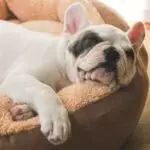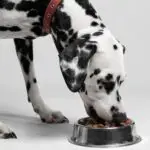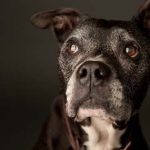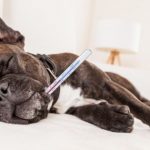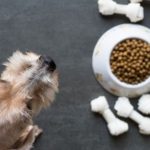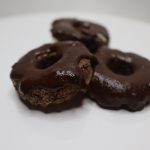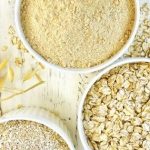Here are ten things you might be doing that are destroying your dog’s diet!
1. NOT FEEDING FOR YOUR DOG’S LIFE STAGE
Your dog’s nutritional needs change throughout their lives, the pet food industry has broken down dogs lifespans into three main stages: puppy, adult, and senior. Sometimes people will feed their puppy and senior dogs food for adult dogs and vice versa. While many times this occurs because there are multiple dogs in the home at varying life stages, it can have terrible repercussions long-term, especially for puppies.
Puppy foods are specifically designed to assist in their growth and they usually have a very high caloric content to accommodate for their booming energy levels. Since it is so high in calories, if you are giving your adult dog puppy food they will most likely be taking in too many calories and this can lead to unwanted weight gain. Another reason you should feed your puppy a diet meant for their life stage is that since it does have an increase in calories and other nutrients, you probably won’t have to feed as much as if you were feeding food meant for adult dogs. A quality puppy-specific diet should have all of the nutrients your fur baby needs for proper brain and body development.
On the other hand, senior dogs tend to need a decrease in calories as their metabolisms are usually slowing down. Feeding them puppy food or continuing them on the same diet they were on as adults may cause an increase in weight, which can cause other health issues down the line. In addition, many senior dog foods contain vitamins like MSM to help with joint issues and some even help with dental issues. This blog article gives more tips on what you should and should not do when feeding your senior dog.
2. NOT CHOOSING A QUALITY FOOD
Walking into a pet store can be extremely confusing if you don’t know exactly what to look for. You should make it a habit to read the back of the packaging before putting a bag of food in your cart. Some foods can be the equivalent of feeding your dog candy every day instead of the nutritious meal that you want for your fur baby. While it may be cheaper to skimp on your dog’s food as lower quality foods usually give you more for kibble for your money. In the long run you are probably losing money if the food is full of fillers that have no nutritional value.
Not feeding nutritious foods can lead to issues like pica, where your dog will eat dirt and other non-food items in order to get the proper nutrients. Speak with your vet if you notice your dog exhibiting signs of pica.
While premium and organic foods may be too expensive for most, there are still some great foods to choose from. Here are a couple of things to keep in mind when choosing a food:
- Buy your food from a pet store as many stores not dedicated to pets have very limited options and many times not healthy one’s
- Read the bag: always, always read the ingredients and the nutrition label prior to purchase. I always tell clients, if sugar or fillers are the main ingredients put the bag down and run! Well, you don’t really have to run, but back away from the bag.
- Look for real, whole ingredients and avoid meals when possible
- Ask for help, speak with your veterinarian or someone that works in the store to direct you to a good brand

3. FEEDING THE WRONG AMOUNT
In addition to feeding the right type of food, you want to ensure you are feeding the right amount of food. If you are making your dog’s meals at home it is extremely important that you know the amount of calories and other nutrients your dog needs to live a happy and healthy life.
Most food companies will place suggested amounts for feeding on their packaging, but just like people, every dog is different. Speak with your vet or veterinary nutritionist to develop a meal plan, especially for homemade diets as you will want to know the nutritional and metabolic energy requirements for your dog.
A good rule of thumb for adult dogs is to feed 2-3% of your dog’s ideal body weight into 2-3 portions throughout the day. If you want to know exactly how to determine how much to feed your dog read our article all about feeding amounts.

4. NOT FEEDING FOR DISEASE PROCESSES
If your dog has a chronic illness like pancreatitis, diabetes, or kidney issues, it is extremely important that their diet is geared towards keeping their organs as healthy as possible.
For instance, if your dog has pancreatitis, you want to ensure your pet’s food is very low in fat and with kidney disease a decrease in protein. Feeding for a specific disease process get’s tricky with homemade diets, but some people are willing to take the time to speak with a nutritionist and get a great long-term meal plan together. If that’s not in the cards for you there are plenty of over-the-counter prescription and non-prescription diet choices available.
5. GIVING TABLE SCRAPS
There’s nothing as sad as a pup that is staring at you with those longing eyes waiting for you to drop a piece of food from your plate onto the floor. Believe me, I’ve been there, and there are a lot of people that give in to the somber puppy eyes. In fact, this may not be the first time you’ve heard this, so stay strong my friend, because feeding your dog table scraps, especially heavily seasoned or fatty ones can have life-altering effects on your pup.
Feeding fatty and salty foods can wreak havoc on your dog’s organs like the pancreas which can lead to acute or chronic pancreatitis. In addition, dogs can’t have many foods that we can like onions and garlic, so if you are feeding your dog these foods it’s best to put an end to it.
If you must allow your dog to share in your meals, make him or her a special (small) plate by boiling their food without any seasonings and skimming off any fat or skins from meats prior to feeding.

6. FEEDING THE WRONG CONSISTENCY
Pay attention to the ease or difficulty your dog has when chewing kibble if that is all they get. If you have a small puppy the bites may be too large for them and senior dogs that have lost a lot of teeth may not be able to chew as they once did. You may have to wet the food or add a little bit of soft food to soften it, although you don’t want to feed primarily soft canned food as this isn’t always the best thing for their teeth.
7. NOT ELEVATING YOUR DOGS FOOD
The jury is still out on if elevated feeders help prevent bloat in dogs, but if your dog has issues like megaesophagus or orthopedic disorders these heightened dishes may prove to be beneficial for your pup. If your dog doesn’t have a health issue where their food needs to be elevated it is not something that needs to be done.
8. NOT TAKING INTO ACCOUNT ENERGY LEVELS
If your dog is extremely active and gets plenty of daily exercise they will need more calories to meet their energy needs. This means they may need to eat a lot more than a dog that is less active or overweight.

9. NOT PAYING ATTENTION TO CALORIC INTAKE
This is especially true if your dog is overweight or obese as maintaining a healthy body condition is extremely important for your dog’s overall well-being. If your dog is overweight and you continue to feed the same amount or type of food you could be doing a lot more harm than good. It is best to speak with your veterinarian about getting your dog on a feeding plan. Your plan may consist of staying on the same food but decreasing the amount or completely switching to a low-fat weight maintenance diet.
10. IMPROPER FOOD STORAGE
If you aren’t properly storing your dog’s food, it could easily get moldy due to dampness, go bad a lot quicker due to exposure to air, or get unwanted critters. To ensure you are properly storing your dog’s food read our article here about proper dog food storage.



